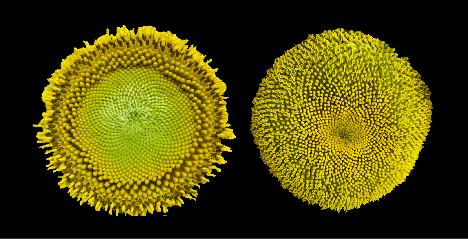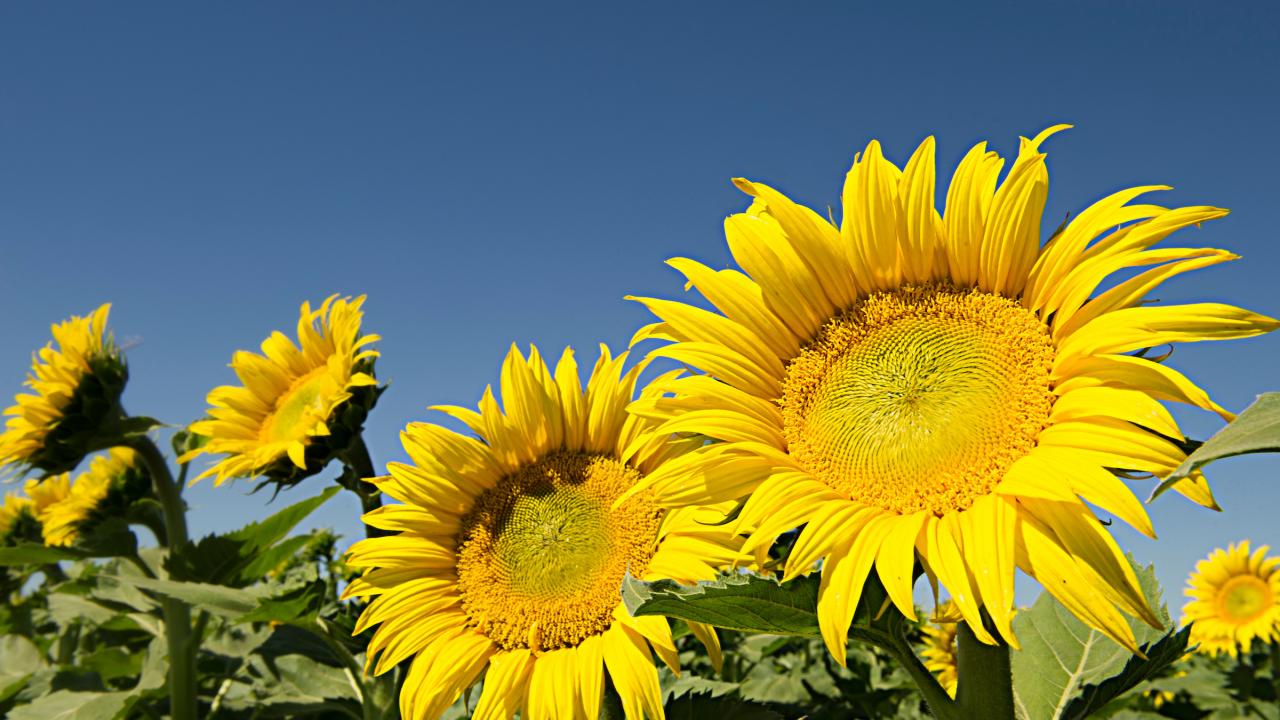An internal circadian clock controls the distinctive concentric rings of flowering in sunflowers, maximizing visits from pollinators, a new study from plant biologists at the University of California, Davis, shows. The work is published Jan. 13 in eLife.
A sunflower head is made up of hundreds of tiny florets. Because of the way sunflowers grow, the youngest florets are in the center of the flower face and the most mature at the edges, forming a distinctive spiral pattern from the center to the edge.
An individual floret blooms over a couple of days: on the first day, it opens the male part of the flower and presents pollen; on the second day, the female stigma unfold to receive pollen. Somehow, florets coordinate so that they open in concentric rings starting from the edge and moving inward on successive days, with a ring of female flowers always outside the earlier-stage, pollen-bearing male flowers.
Pollinating bees tend to land on the ray petals around a sunflower head and walk toward the center, said senior author Stacey Harmer, professor of plant biology, UC Davis College of Biological Sciences. That means that they will pick up pollen after they have walked over the female florets, then carry it to a different flower head.
Harmer and postdoctoral researcher Carine Marshall wanted to understand how the spiral pattern of florets turns into concentric rings of flowering. Harmer’s lab had previously established that circadian rhythms control how growing sunflowers track the sun during the day.
The internal circadian clock of a plant or animal runs on a cycle of about 24 hours, allowing different genes to be activated at different times of day. Natural day/night cycles keep this internal clock synchronized to actual day time. Changing the length of daylight, or darkness, can reset the clock. In sunflowers, continuous light disrupts the clock entirely.
Time-lapse video
The researchers took time-lapse videos of sunflowers grown in different light/dark or temperature conditions. They found that the plant’s circadian clock controls the opening of florets. When the clock was disrupted by growing plants in continuous light, florets did not open in concentric rings, but only by age, starting at the edge and moving to the center in a continuous gradient.

When plants that had been grown with a disrupted clock were moved outside, they attracted fewer pollinators than normal sunflowers.
“We think that being able to coordinate in this way makes them a better target for bees,” Harmer said. “It’s a strategy to attract as many insects as possible.”
As farmers adapt to a changing climate, it will become increasingly important to make pollination as efficient as possible in crops that require it, Harmer said. Understanding how the circadian clock and the environment affect flowering will help breeders develop cultivars that flower at the optimal times of day to promote pollination, despite climate change and declining insect populations, she said.
Additional authors on the paper are Veronica Thompson and Nicky Creux. Creux is now at the University of Pretoria, South Africa. The work was supported by the National Science Foundation and the U.S. Department of Agriculture-National Institute of Food and Agriculture.
Media Resources
Read the paper (eLife)
Media Contacts:
- Stacey Harmer, Plant Biology, slharmer@ucdavis.edu
- Andy Fell, News and Media Relations, 530-304-8888, ahfell@ucdavis.edu
